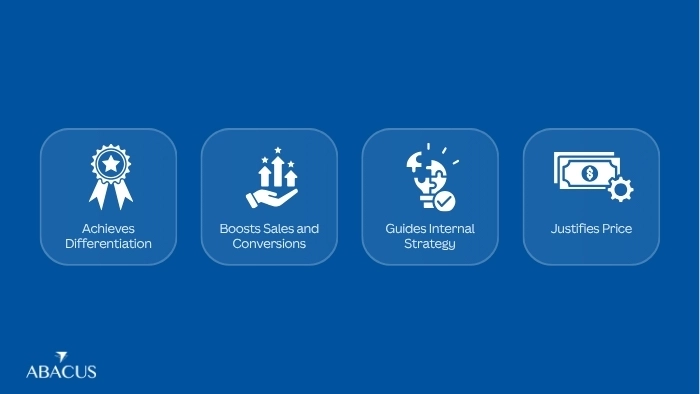
Author
Strategic Positioning in Marketing: Creating a Unique Market Identity
Every day, consumers are bombarded with thousands of product choices. Without a clear identity, what you’re offering simply vanishes into the noise.
Positioning in marketing is the strategic key to explaining why your product or service deserves to be noticed, how it stacks up against the alternatives, and, most critically, how you want your brand to be perceived in the mind of the customer.
Effective positioning ensures that when your target audience thinks of a specific need, they automatically think of your brand. It’s time to move beyond guesswork and deliberately shape your market perception.
What is positioning in marketing?
Marketing positioning refers to the act of developing a superior and desirable image of a product or a brand relative to the competitors.
It is a strategic, intentional action of positioning an offering through emphasizing the unique selling proposition of an offering and defining what value it brings to a certain section of the market.
To position a product, an organization ought to have a profound insight into three aspects, namely their target market, the nature of competition and unique characteristics of a product.
The end is to secure a favorable and sustained position in a consumer mind, which has a significant impact on purchasing behavior and is a way to create sustainable competitive advantage.
Why is positioning in marketing so crucial for success?
A robust positioning in marketing strategy is the foundation of all future sales and communication efforts. Its importance is multifaceted:
- Achieves Differentiation: It highlights the distinct advantages of your product, demonstrating to the target audience the reasons why your solution is different and better than the competition. This difference makes your competitive edge concrete.
- Boosts Sales and Conversions: Right positioning is very strong with the perfect customer. By communicating directly to the point of pain, you clearly get more qualified leads, more conversions, better retention of your customers in the long run.
- Guides Internal Strategy: The defined positioning acts as a compass for product development, sales training, and advertising. It makes all departments pull together because all are working towards a single mission, which is there is no mixed-messaging and misalignment within the organization.
- Justifies Price: If your offering is positioned as a premium product (like Apple), the defined value and unique traits justify a higher price point compared to commoditized alternatives.

What are the five positioning strategies you can use?
The method you choose for positioning in marketing usually emphasizes a key aspect of your product or service. While many combinations exist, here are five foundational strategies:
- Price Positioning: This is a cost leadership strategy that emphasizes on low cost, where affordability is the key competitive strength. (Example: Walmart, focusing on value of money).
- Quality/Premium Positioning: This tactic emphasizes superior materials, design, craftsmanship, or exclusivity. This strategy seeks to own the high-end space. (Example: Luxury automotive or high-design tech brands).
- Feature Positioning: This is most effective when one product has an exceptional, innovative feature that other products do not. The marketing focuses on the special functionality. (Examples: Some kind of novel screen tech or an embedded AI helper).
- Benefit Positioning: This is not about what the product is but rather what the product does to the customer, which is, it solves a pain point. (Example: Uber, who makes itself instant, reliable convenience and not an immediate taxi service).
- Competitive Positioning: This position is a direct or indirect comparison versus your competitors product, and tends to present your competitors with their flaws being your strengths. It is a head-to-head strategy in order to show a definite competitive edge.
What are the essential steps for an effective positioning strategy?
Creating a powerful positioning in marketing strategy requires a deliberate, data-driven approach. It undergoes four fundamental phases, which will guarantee that your brand attains and retains a solid market presence:
- Conduct Deep Market Research: This is the foundation. You must rely on objective data, not assumptions. Analyze your target audience’s needs, preferences, and pain points. Crucially, conduct a thorough competitive analysis to identify market gaps and see how rivals are currently positioned.
- Craft the Product Positioning Statement: Based on the USP and target insight, create your brief, internal product positioning statement (the For… who have… is a) framework). This statement is made the one truth of all the departments.
- Define Your Unique Value: Based on your research, clearly articulate your unique selling proposition (USP). Determine the single, most compelling benefit that sets you apart. This is your core differentiator and the essence of your future communications.

- Implement, Test, and Adapt: Your strategy must be put into action through messaging, pricing, and chosen channels. It is vital to monitor key metrics and gather customer feedback regularly. The market is constantly changing, which means that your competitive advantage will always require continuous testing and adaptation to remain relevant.
Conclusion
Marketing positioning is not a one-shot exercise, but a lifelong investment in occupying a assign a particular and valuable position in their mind of the consumer.
Defining your target audience carefully, isolating your unique selling proposition and putting the four-step strategy in place move you out of the realm of offering a product, to being the only solution to the perceived need.
Power has a direct conversion to a sustainable competitive advantage which can see your brand even succeed in competitive markets.
Begin implementing these necessary measures as soon as possible to make sure that the voice of your brand is not only heard by people but also remembered.









